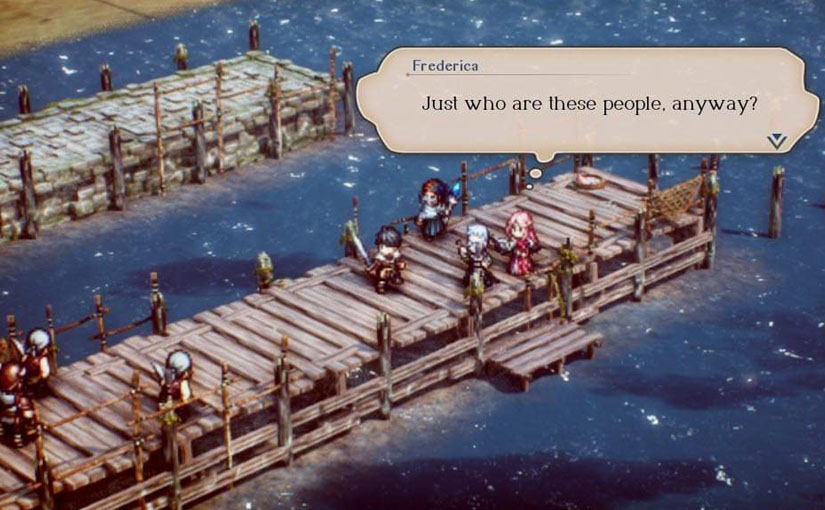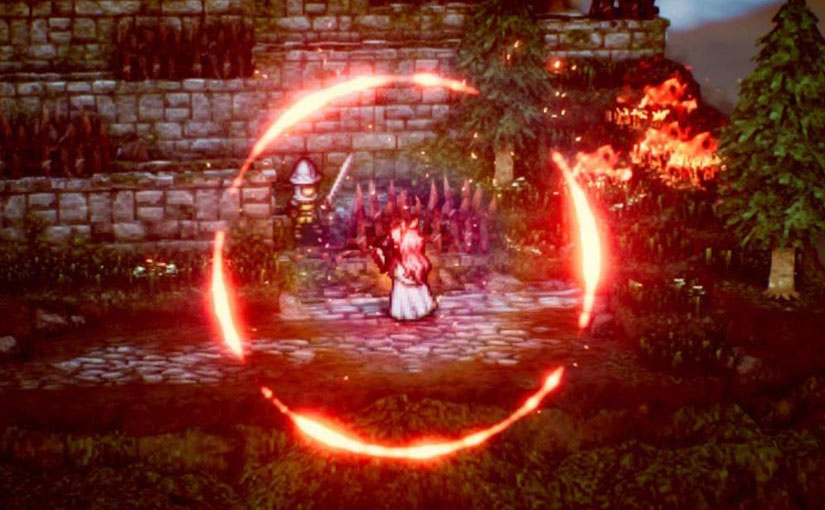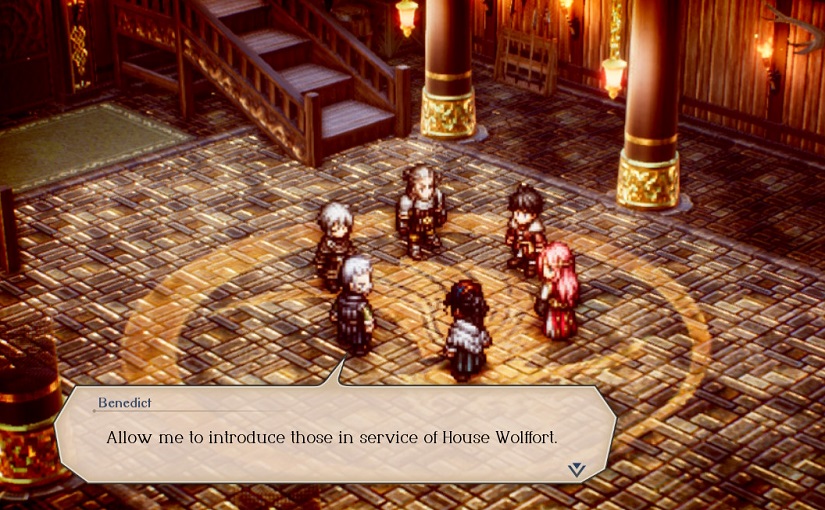Actually Full of Squares
The grid-based, strategy role-playing game has always been a favoured genre of mine. My first experience was with Shining Force III for the Sega Saturn. I bought it off the back of playing and enjoying dungeon-crawling RPG Shining the Holy Ark, and honestly wasn’t expecting such a significant shift in gameplay. I loved it, though. The bright graphical style, the multitude of cool characters to recruit, the depiction of epic, fantasy battles in grid-based form. I’ve since played the earlier games in the Shining Force series, as well as the likes of Fire Emblem, Final Fantasy Tactics, Disgaea, Luminous Arc and more, but to me, Shining Force III is still the pinnacle. Let’s see if the genre’s newest addition, Square Enix’s Triangle Strategy, can knock it off the top spot.
First off, as mentioned in my recent look at the demo, the game is visually exquisite. The retro-styled locales and battlefields portray a lush and enticing fantasy world of the kind that escapists long for. Fires glow warmly in hearths, foliage appears thick and verdant, and water glistens captivatingly in the background. The sprites are pleasing and echo the personality of each character’s portrait. As the game progresses, the protagonist’s allies can be promoted to a more powerful class, and the character sprites change in kind, subtly increasing in grandeur to reflect the character’s growth.
The music compliments the world well. A few of the tracks are epic and memorable, and the rest are in-fitting with the setting and exemplify the atmosphere. However, while the dialogue is fine, the voice acting comes across as very pedestrian. Strangely, main protagonist Serenoa was saddled with the most uninspiring voice performance, but the ponderous drone of advisor Benedict comes a close second, his slow delivery of lines begging to be skipped. The voice acting in general lacks life, and comes across as generic and lacking in character. It might be best to turn the speech volume to zero and read the dialogue yourself. You’ll act it out better in your head.

The story is complex and multi-layered, and designed to present the player with difficult decisions at pivotal points. It’s serious and political, concerning high-profile members of a medieval fantasy society making important decisions that affect the trajectory of a coming war. When it’s time to make a decision, protagonist Serenoa puts the question to his most loyal followers, and a vote is undertaken. Interestingly, Serenoa, and by extension the player, does not get to vote at all, but has the ability to speak to all of his companions before a decision is made, hoping to swing them to his way of thinking. How well this goes can often depend on how much the player explored and how many NPCs were interacted with in the build up to the pivotal moment, as such interactions can unlock crucial conversation options that can change the opinion of an ally. Fail to gather enough information, and risk leaving the story’s direction to chance.
These grand decisions are Triangle Strategy’s most obvious innovation, but there are also interesting intricacies in the gameplay that set it further apart from its competitors. As with all games in the genre, positioning of allies is incredibly important to your chances of victory, but there are various abilities and environmental effects that take this even further. Back-stabbing critical hits, consecutive attacks on surrounded enemies, and spells and abilities that can move opponents make for interesting tactical options. As do flammable, freezable and electricity-conducting terrain types. In an arena with high drops onto spike traps, wind magic becomes invaluable for knocking your enemies to their dooms below. If it’s raining and there are puddles forming, then lightning magic becomes devastating. That is, unless someone used ice magic to freeze the puddles. Still, you can always use a fire spell to turn the ice back into water again. There’s a depth to the game mechanics on offer that lends itself to experimentation and replayability.
The large roster of combatants available to find and recruit also helps in this regard. While there is a core group of plot-significant characters that you’ll want to make sure are appropriately powered-up at all times, there are plenty of secondary characters also willing to fight for the cause, and each one of them brings something different to the table. There’s a wandering shaman who is able to change the weather, heightening the affects of certain spells, and a clever merchant who can turn enemies to your cause with the offer of riches. There are even characters that excel in item use, meaning that pretty much any play-style is covered. Although there are a multitude of replayable training battles, you’ll need subsequent play-throughs to really get to grips with everyone. Good thing there’s that massively branching storyline, then.
The story was clearly important to the developers, and is taken very seriously. Numerous optional scenes are available throughout the campaign, dropping in on characters in distant lands as they discuss their plans for conquest. There are long periods of story-building and scene-setting between battles. If you’re into it, it’s great. If you’re less invested, but still feel like you need to understand what’s going on and refuse to skip any dialogue, you’re in for a bit of a slog. For me, personally, it was a mixed bag. Certain characters felt deserving of the time spent on illustrating their involvement in the story, while others seemed superfluous or predictable, and occasionally my attention drifted.
There are no monsters, either. That’s right, not a single goblin, no ghosts or zombies, not even a wolf. Even Game of Thrones (which is almost certainly an influence on the fantasy/political tone of the game) had dragons. Your enemies consist of the various opposing heroes and generals you’ll encounter, and a few different types of soldier or magic-user, reskinned in the colours of their national affiliation. This isn’t necessarily a bad thing, but it doesn’t help if you’re finding the game’s tone a little too sober. I would’ve liked a wyvern cave or two to explore. The battlefields and story scenes are accessed from a map of the continent. This is fine, and gives off the impression of moving pieces around a military map, but also takes away from any sense of journey or discovery. It becomes apparent early on that there are no mysterious new frontiers to explore, you’re just going to be hopping back and forth between the three established nations throughout the campaign.
As such, what we’re left with is a mechanically and visually fantastic strategy RPG that just lacks the flair, personality or variety that the likes of Shining Force or Final Fantasy Tactics can offer. If you come in knowing that, and you become invested in the story, you’re going to have a fantastic time, and likely won’t put your Switch down for hours on end. If, like me, you find yourself harbouring that nagging thought that the story twists and character beats are not quite as effective as the serious tone requires, you might find yourself thinking that the game, like it’s title, needed a touch more personality.



